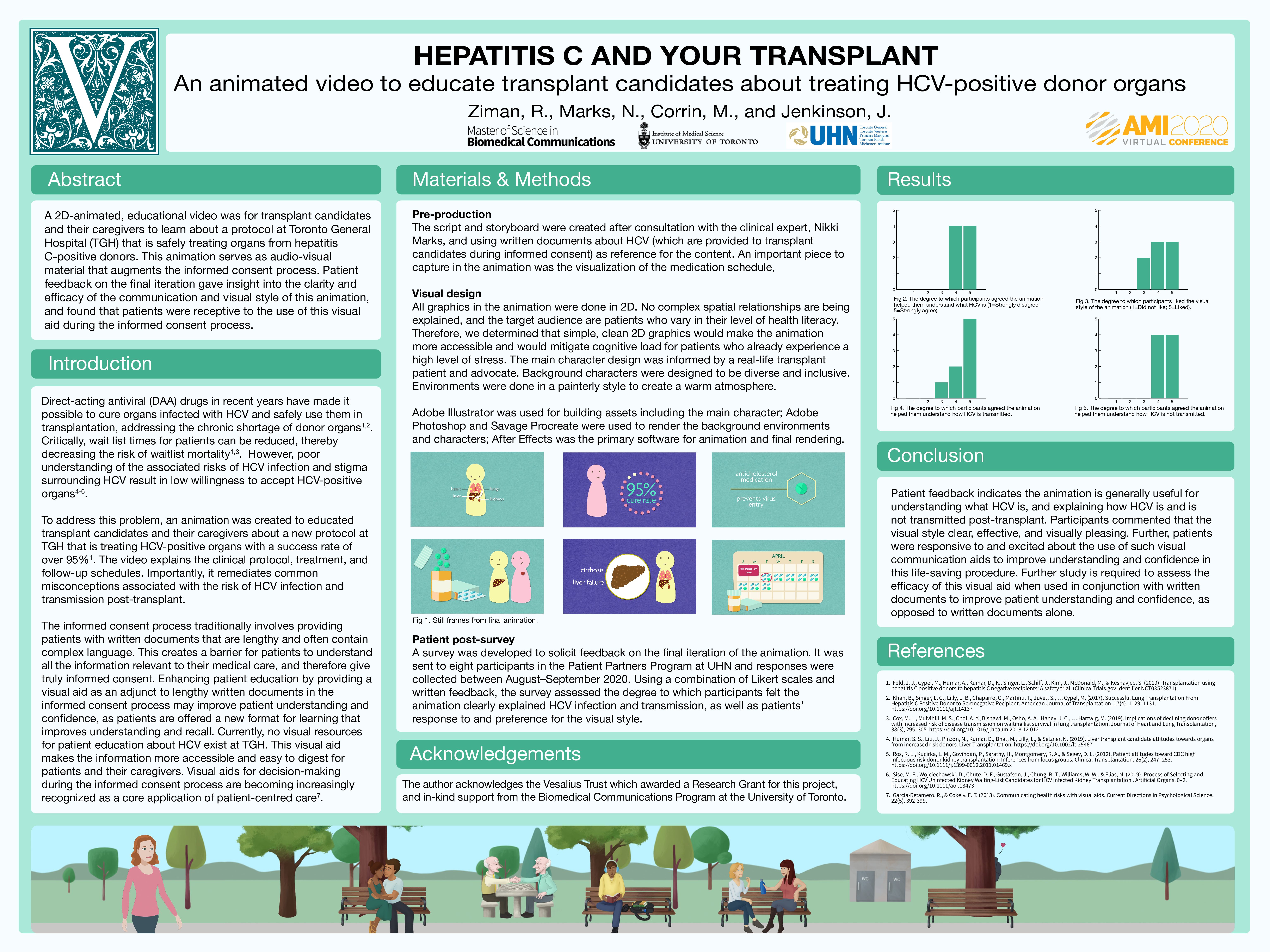2020 Vesalius Trust Poster Symposium
December 2020
Animating Primary Hemostasis for Medical Student Education
Evelyn Lockhart, Michael Corrin, Paula James, Ric Lowe, Jodie Jenkinson
University of Toronto
Abstract: Physicians have difficulty recognizing and diagnosing disorders of primary hemostasis. The root of this may lie in their education, where students are often taught hemostasis using static graphics. We aimed to create a didactic animation on primary hemostasis for medical students to be used in North American medical schools. To promote widespread use of the animation, we surveyed hemostasis educators from Canada and the US regarding the animation’s learning objectives. The animation’s script and storyboard were developed using the Animation Processing Model (APM), a psychological processing model that addresses the perceptual limitations of learners. This animation is the first biomedical animation to use the APM in its design. Furthermore, this is the first didactic hemostasis animation, which sought peer consensus for its learning objectives.
Hepatitis C and Your Transplant
Roxanne Ziman, Nikki Marks, Michael Corrin, Jodie Jenkinson
University of Toronto
Abstract: A 2D-animated educational video was developed to help educate organ transplant candidates and their caregivers about organ donation from hepatitis C-positive donors. This new protocol at Toronto General Hospital (TGH) included an animation designed to augment the informed consent process. Patient feedback on the final iteration gave insight into the clarity and efficacy of the communication and the visual style of this animation. The authors found that patients were receptive to the use of this visual aid during the informed consent process.



